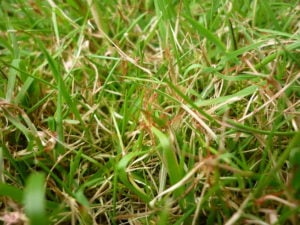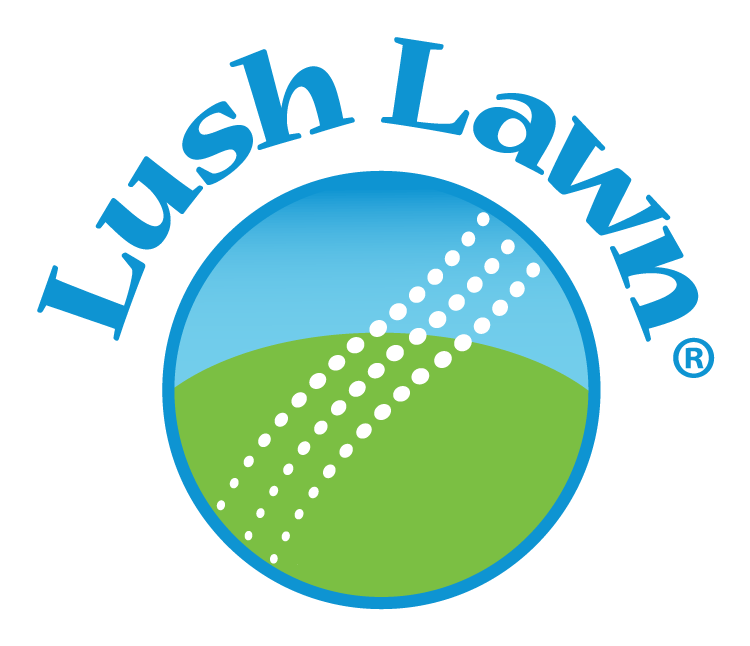What Is Red Thread Disease?
When it comes to keeping lawns in good condition, disease control is every bit as important as watering and fertilization — but not all grasses are vulnerable to the same diseases. In the case of yards lined with Kentucky bluegrass, ryegrass, bentgrass or red fescue, there is an increased risk of infection of a particularly dangerous lawn disease: red thread.
Named after the red fibers it leaves behind on infected grass, red thread disease, or red thread fungus, is a common lawn disease caused by Laetisaria fuciformis — a fungus that thrives on grass weakened by a lack of nutrients. More specifically, red thread disease most often attacks grass that lacks a sufficient amount of nitrogen and subsequently isn’t strong enough to defend itself against the lawn fungus.
What Are the Symptoms of Red Thread Disease?
Red thread disease is typically identified by the colored threads for which it’s named:
- When red thread disease infects a lawn, it weaves pink or red fibers around the stems and leaves of plants.
- As the lawn disease becomes more severe, the red thread fungus fibers grow, forming circular clumps that range anywhere from 4 inches to 8 inches in diameter.

It’s not uncommon for homeowners to mistake red thread disease for other lawn infections that can also leave behind a pink or red mark on grass. (Pink patch disease and pink snow mold are two examples.)
From a visual standpoint, the difference between red thread disease and these alternatives is that red thread disease leaves fibers in the grass while the others do not. Upon a closer look at the infected areas, you can tell the difference between these lawn diseases, which is critical to taking the right steps to ensure proper treatment.
Different Ways to Treat Red Thread In Lawns
There are two primary ways to treat red thread disease — and it depends primarily on the severity of the infection when treatment is applied:
- Relatively minor infections: Treating red thread fungus may only be a matter of fertilizing and aerating your lawn more effectively. Adding nitrogen back into soil in the spring and early summer can reduce or eliminate the threat of red thread disease, while aeration can loosen the soil to help nutrients like nitrogen more easily reach grass roots.
- More severe infections: It’s likely that a fungicide will need to be applied to curb the spread of the disease.
Our Approach to Controlling Red Thread in Lawns
Lush Lawn has extensive experience dealing with red thread disease, taking every precaution to keep your lawn healthy. Our work begins with assessing the extent of a red thread infection (as well as any other diseases that are harming your lawn’s health).
From the insights we gather, we can determine whether a fungicide is necessary. If that’s the case, we will spray the fungicide quickly and effectively while causing as little disruption as possible to the surrounding environment.
We can also perform aeration and fertilization services to reinforce your lawn’s defense against not only red thread disease but all forms of lawn disease.
Don’t Let Red Thread Disease Disrupt Your Lawn’s Health. Contact Your Local Lush Lawn Branch to Request Our Services.
Grand Blanc Lawn Service and the surrounding areas: Burton, Davison, Fenton, Flint, Flushing, Linden, Swartz Creek, Holly and more.
Waterford Lawn Service and the surrounding areas: White Lake, Commerce Township, Pontiac, Auburn Hills, Highland, Lake Angelius, Sylvan Lake, Orchard Lake and more.
Canton Lawn Service and the surrounding areas: Livonia, Westland, Plymouth, Northville, Farmington Hills.
Rochester Hills Lawn Service and the surrounding areas: Berkley, Birmingham, Bloomfield Hills, Clarkston, Clawson, Detroit, Farmington, Farmington Hills, Hunting Woods, Madison Heights, Oak Park, Pleasant Ridge, Rochester, Royal Oak, Southfield, and Troy.
Brighton Lawn Service and the surrounding areas: Ann Arbor, South Lyon, Canton, Northville, Plymouth, Livonia, Pinckney and more.
Saginaw Lawn Service and the surrounding areas: Clio, Birch Run, Frankenmuth, Bay City, Midland and more.
Photo Credit: Kris Lord, Flickr, CC By 2.0





